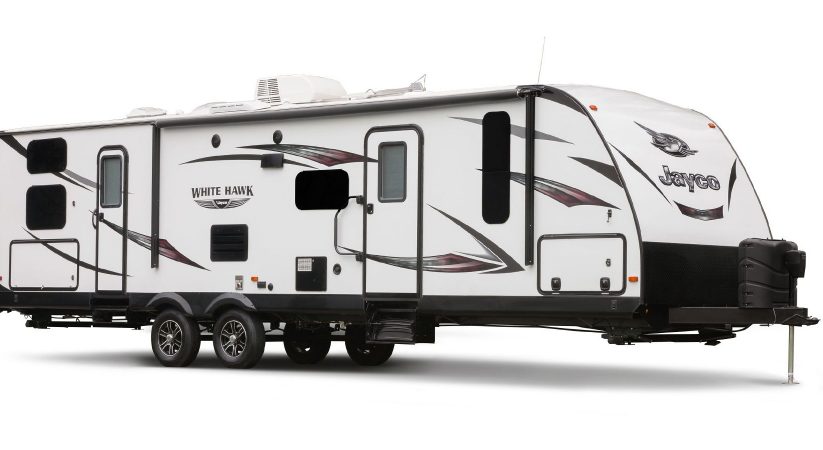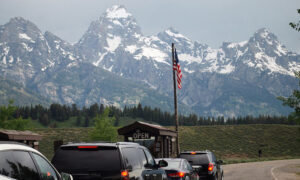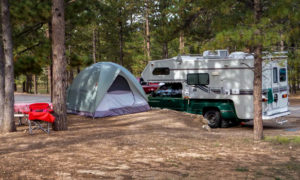
Last updated on September 26th, 2016 at 06:18 pm
Understanding tail swing and spatial awareness are the keys to safe RV handling.
For several years our home base, whenever we were in Yuba City, was the same RV park. We usually had the same site each time we returned. The site we had was in the same section where overnighters were assigned spaces.
While our site was large and even had a nice patch of grass, the overnight pull-throughs are gravel and concrete and very narrow. They are not angled which meant RVera had to make near 90-degree turns into a site. On top of that, the road to the sites is narrow and has a chain link fence on the right side.
Innumerable times I looked out my window to see an RVer hug the fence while lining up to maneuver into one of those pull-thru sites, and then hear the crunch as the rear corner of the RV contacted the fence as it started the turn.
As you may figure, it happens mostly to RVers pulling longer fifth wheels and travel trailers, but long motorhomes are not immune to tail swing.
Depending on how close to the fence the RVer was and how tight the turn he made into the site, damage could be as light as a few embarrassing scratches to a heartbreaking separation of the fiberglass end cap from the sidewall.
The moral of this story, of course, is to always be aware of your RV’s tail swing.
For motorhome drivers avoiding tail swing problems is a matter of checking the mirrors.
RVers pulling fifth wheels and travel trailers can’t rely on mirrors since tail swing always occurs on the blind side of the rig. For them a good sense of spatial awareness is essential.
Spatial awareness is a well thought-out awareness of things in the space around your RV and of the RV’s position in the space.
Anyone who drives a car has developed spatial awareness. We’ve learned how much space our car takes to make a U-turn and how much we can cut the steering wheel when pulling into or backing out of a parking spot.
Spatial awareness while driving your RV is developed the same way… with practice. But how many of us actually practice driving our RV… like we did learning to drive a car? The best place to practice driving your RV and develop spatial awareness is in an empty parking lot.
To better understand how tail swing affects your rig have another driver line the RV along a straight line… a painted lane divider or gutter for example. Then as you watch from the rear, the driver should drive forward making as tight a turn as possible.
Using the line as a reference, watch how far the rear of the RV swings away from the line. Repeat the test two or three times making both left and right turns so you get a good feeling for how much the RV swings. Then change drivers to develop spatial awareness with relationship to where you are as the driver to the same line.
Of course, even the most finely tuned spatial awareness is no substitute for a good spotter, so use one anytime it is practical to do so.
—————-
We need your tips! No one knows everything and everybody knows something so, please, send us your tips and ideas for tips. We and your fellow RVers will be forever grateful.
—————
RVing 101 Training Course on DVDs
Get a box set of instructional DVD titles for hours of one on one instruction. Not only do you eliminate the guesswork as to which DVDs are suited to your RV, you SAVE significant money with the box set discount. There are DVD sets for Class A, Class C Motorhomes, Travel Trailers & Fifth Wheels.
————–







